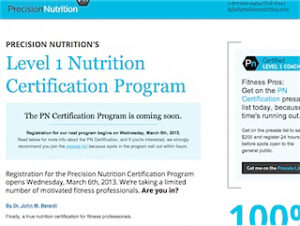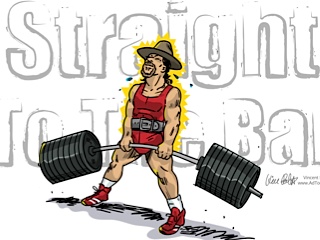
If you’ve been struggling with losing fat and getting toned up you probably learned the hard way that there are very few legit diet plans out there that actually work. Big hype diets such as low carb, Dukan or raw foods type of diets are pretty poorly designed and do not sustain body recomposition – losing fat while building muscle.
This should be your goal – recomposing your body. Just losing weight may not get you the results you are after. Yeah, the scale will go down, yeah you will lose weight, but that won’t get you that fit, athletic physique you want. Best case scenario you will end up skinny fat, worst case scenario you will starve yourself by following a stupid diet and when you think you are done with it you’ll start binging and put on all the weight you lost if not more.
If this is you, relax we have a solution for you. Read on and find out how to setup your own personal diet plan that actually works for you. At the end of the day, the best diet is the one you can stick to. Let’s take things one by one.
Step 1: Energy balance
The most important thing that no famous diet tells you is that losing or gaining body weight it’s all about calories in versus calories out, or energy balance – in more technical terms. That’s what physics tells us – thermodynamics to be more specific. You lose weight when you are in a negative energy balance (caloric deficit) and you gain weight when you are in a positive energy balance (caloric surplus). It’s just science.
As you guessed already, the energy balance is determined as the difference between the calories we eat or drink and the total daily energy expenditure (TDEE). The TDEE is composed of the basal metabolic rate, on top of which you add the energy consumed in any type of physical activities such as sitting at the office, walking, mowing the grass or working out.
Therefore, the only thing you need to do in order to lose weight is to be in a caloric deficit. It is as simple as that. It doesn’t matter what you eat, it doesn’t matter when you eat it. As a matter of fact a science teacher lost 56 pounds in six months while eating nothing but McDonald’s.
There’s your proof. Anyway, a good diet plan needs to be a little bit better than eating just junk food, but more about it later on.
The first building block of your diet will be the target caloric intake. Your whole diet plan will sit on it and it’s crucially important to get it right. In common practice a solid fat loss diet is built around a caloric deficit of 20-25% below the maintenance level.
So, if you maintain your weight at 2,500 kcal you should lower your caloric intake to about 2,000 kcal (20% deficit).
There’s a reason for setting the deficit to 20-25% and I don’t recommend using a more aggressive approach – it is not sustainable in the long run, it puts a lot of stress on your metabolism and it doesn’t help your workouts either.
On the other hand, using a more moderate caloric restriction such as 10% is not optimal because the weight loss rate will be slower, and you will have to stay in a deficit for a longer period of time which again is not good for your metabolism, hormones and training.
With a 20 to 25% deficit you should lose 1-2 pounds per week, but this will depend on factors such as your body fat and age. Overweight people tend to lose weight faster, mostly because they hold a lot of water weight, while leaner individuals lose weight at a slower rate.
So step 1 is setting the right calorie target.
Now that we have a solid foundation to build your diet on, let’s move to the next step.
Step 2: Macronutrient distribution
As you may know, the caloric content of a diet comes from 3 macronutrients: protein, carbohydrates and fats. Each gram of protein and carb contains 4 kcal, and a gram of fat contains 9 kcal.
The way you decide to split your calories between the macros combined with a solid weight training routine, will pretty much determine the composition (muscle to fat ratio) of your body. That’s why setting the right macro split is just as important as caloric intake, especially during a cutting phase, and here’s how you should do it:
- Protein – as per the scientific evidence, an intake of at least 1 gram of protein per pound of body weight is necessary to support muscle preservation in a caloric deficit. If you are severely overweight you should take in 1 gram of protein per pound of lean body mass, rather than total body weight. So, if you weigh 180 pounds, get at least 180 grams of protein per day. Out of a 2,000 kcal day this means you will get 36% of you calories from protein.
- Fats – a minimum fat intake is necessary for our bodies to work smoothly at hormonal level, to keep the skin healthy, to maintain the joints in good conditions and to protect the internal organs. The recommended minimum intake is around 20% of the calories.
- Carbs – are very important, as opposed to what many dieticians recommend through low carb diets which seem to be very popular nowadays. Carbohydrates provide the energy you need in order to get a good workout in, by putting glycogen in your muscles.
Proteins are the building blocks of muscle fibers, therefore protein intake is really important to maintain muscle mass when dieting.
Out of a 2,000 kcal diet this means about 45 grams of fat per day. From the anecdotal evidence out there anything between 30 – 60 grams of fat per day is fine, but the higher your fat intake is the less room you will have left for your cabs.
You should include as much carbs as you can in your diet as long as you are getting the minimum fat intake and your 1 gram of protein per pound o bodyweight. Considering our 2,000 kcal example above, we are left with 44% of the calories for carbs, which means about 220 grams of carbs per day.
There you have it. To resume here are the guidelines for setting your calories in a deficit:
· 1 gram of protein per pound of bodyweight
· 40-50 grams of fat
· Take the rest of the calories from carbs
There’s your 2nd step.
You don’t need to be spot on every day with these numbers, but you need to keep track of them and make sure you get the weekly averages pretty close to these settings.

Step 3: Choose the foods
Now that you know how much you should eat and how the nutritional information of your meals should look like it’s time to start go shopping for groceries.
Yes, you get to pick the foods you eat as long as you hit the numbers. There are no forbidden foods, but the macro distribution will clean your diet more or less. You probably won’t be able to eat only cheeseburgers and fries like the science professor from the Business Insider, but you definitely can include your favorite foods in there.
Now, because most people have a difficult time during a cutting phase and feel hungry all the time, it’s a good strategy to include satiating foods in your diet such as rice, potatoes, lean meats, fruits and veggies, yogurt (Greek yogurt has more protein), cottage cheese and so on. You can get as creative as you want as long as it fits your macros.
Another good strategy is to avoid eating out a lot or eating foods that you don’t know or you can’t accurately estimate the nutritional information of. Tracking calories and macros can be tricky and getting the numbers wrong will mess up your diet. You will know the numbers are wrong when the scale is not moving or it’s moving in the wrong direction.
Step 4: Plan the meals
You don’t need to be eating 6 meals a day and you don’t need to eat at a certain time. That’s marketing crap.
Meal planning or meal frequency needs to be set accordingly to your personal schedule and based on personal preference. The only thing that I recommend is to plan your meals in such a way so you have a post workout meal no later than 2-4 hours after your training.
Protein synthesis is slightly increased post workout for up to 6-8 hours and there is no point in missing out this opportunity, just in case.
As far as the number of meals per day, again this is subject to personal preference, but having 2 or 3 large meals instead of 5-6 small meals seems to be more rewarding and satisfying during a calorie restriction period for most people I’ve worked with.
That’s why many people use Intermittent Fasting (IF) as a weight loss tool.

A good example of implementing IF is to skip breakfast, have the first meal of the day at noon and then have another meal in the evening. This way, regardless if you train in the morning or in the evening, you will get a meal post workout in a few hours after your training and both of the meals will be relatively large and satiating. This strategy makes dieting much easier.
Step 5: Refeeds, calorie rollover and cheat meals
Lastly but not least, as I said in the beginning of this article, the best diet is the one you can stick to. Adherence is very important. That’s why it’s a very good idea to include several dieting techniques that will help you stick with the diet when you feel like quitting or are about to start binging.
Refeeding and calorie rollover are pretty much similar or work hand in hand. Basically, a refeed day is a planned high calorie day within a cutting phase. Refeed days should be included only when needed and should be carefully planned. Refeed days are not cheat meals or cheat days.
On a refeed your calories are about 30% higher than a regular cutting day, so you have a cap on it. You can’t go as high as you want or as high as you would go on a cheat meal. Basically, the extra 30% will probably put you at maintenance level or slightly above.
Ideally the 30% extra calories should come from carbs alone, while the protein and fat intake should remain the same. Refeeding increased leptin levels (a hormone that is mainly responsible with making us feel good, rewarded) and provide a boost of energy. That’s why it’s recommended to have refeeds on a training day, not on a rest day.
Calorie rollover means that you are allowed to eat on another day the calories that you didn’t eat the days before that. For example, if you eat 100 kcal less Monday to Friday you have an extra of 500 kcal to eat on Saturday, and you can make Saturday a refeed day.
You shouldn’t include more than one refeed day per week and you shouldn’t do it right from the start of your diet. These techniques should be incorporated in your diet when you are halfway done and the deficit starts to become exhausting or taxing on your body. Otherwise, refeeding will just cause your weight loss to stall by offsetting the caloric deficit.
Another way of making things easier is to have cheat meals. These are basically ‘all you can eat‘ type of meals, no calorie counting and no macro tracking. Just as refeeds, these should be included into your diet only when you have reached low body fat percentages (under 10-12% for males and under 18-20% for females).
Look at cheat meals as a more extreme version of refeed days and use cheat meals when a refeed simply doesn’t do the trick for you.
I hope this has been informative and helpful, please let me know what you think and what’s your take on dieting by using the comment section below.











0 Comments